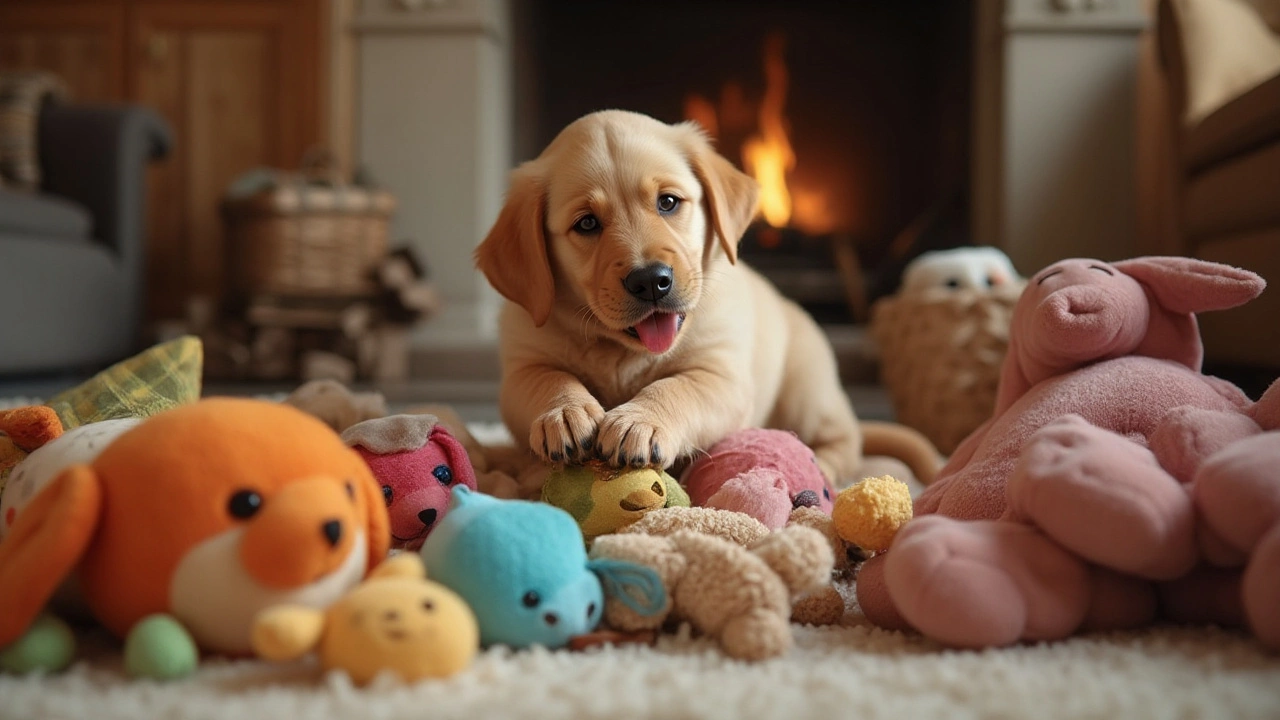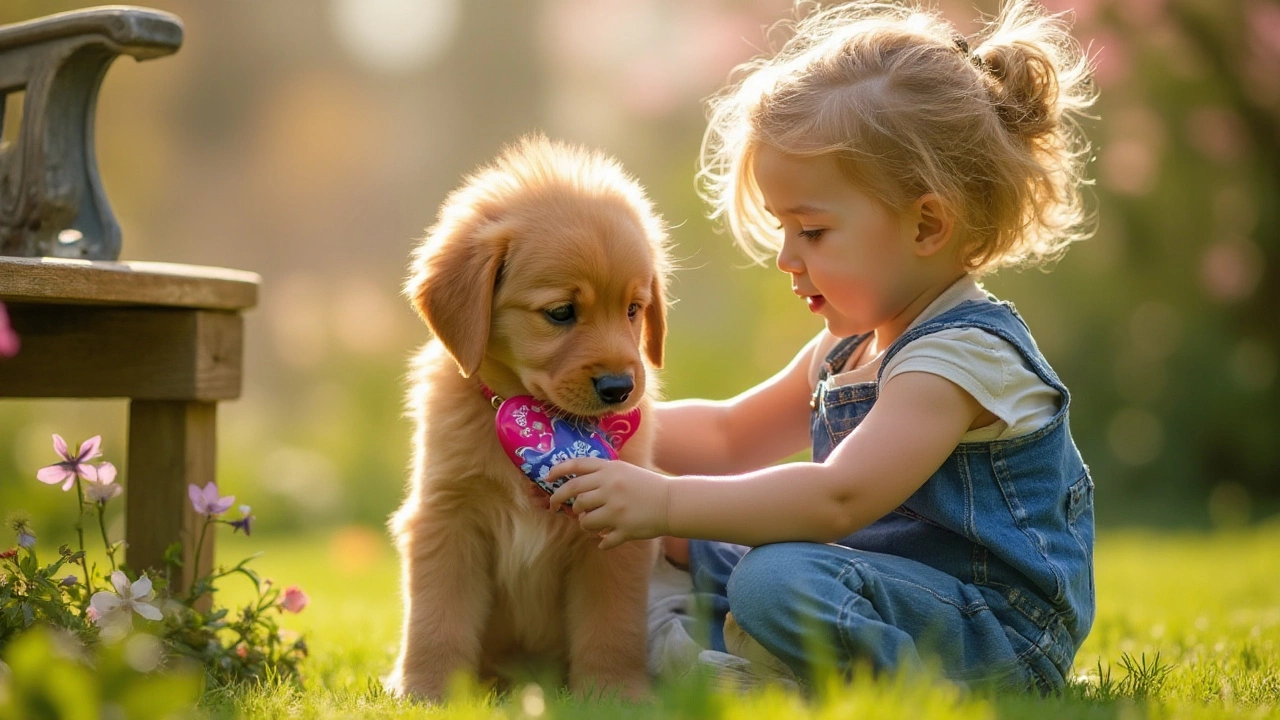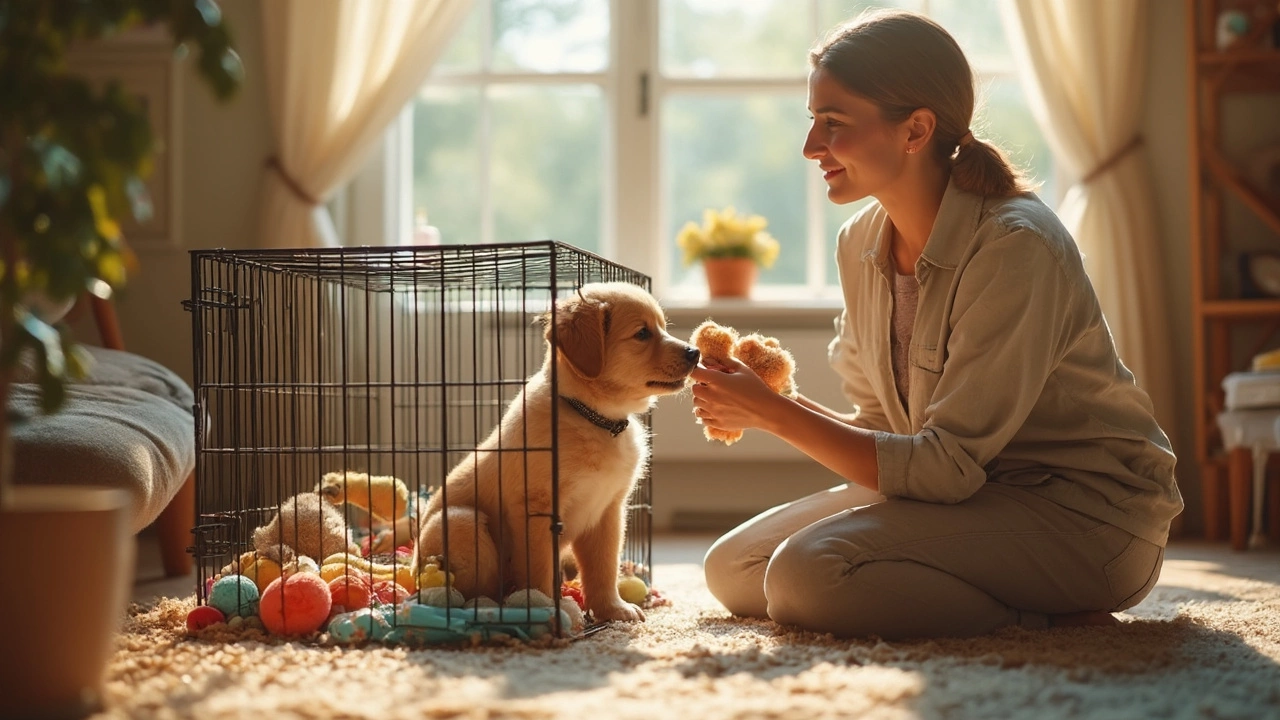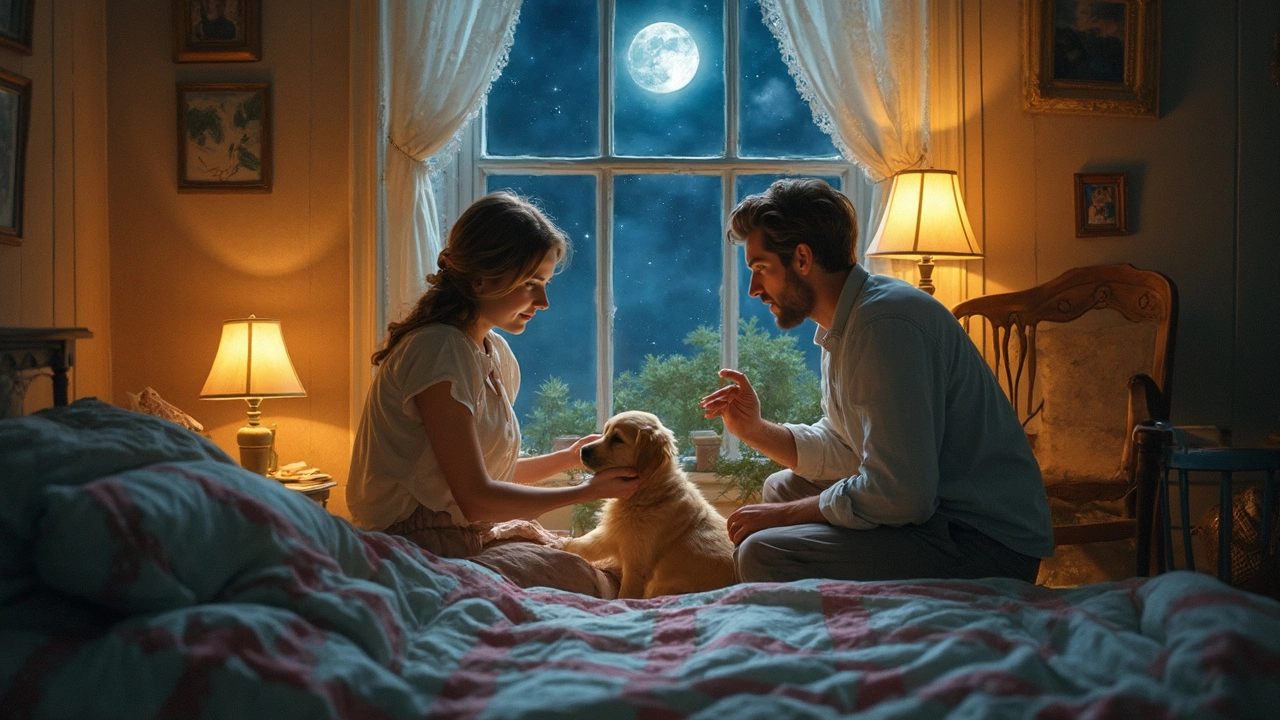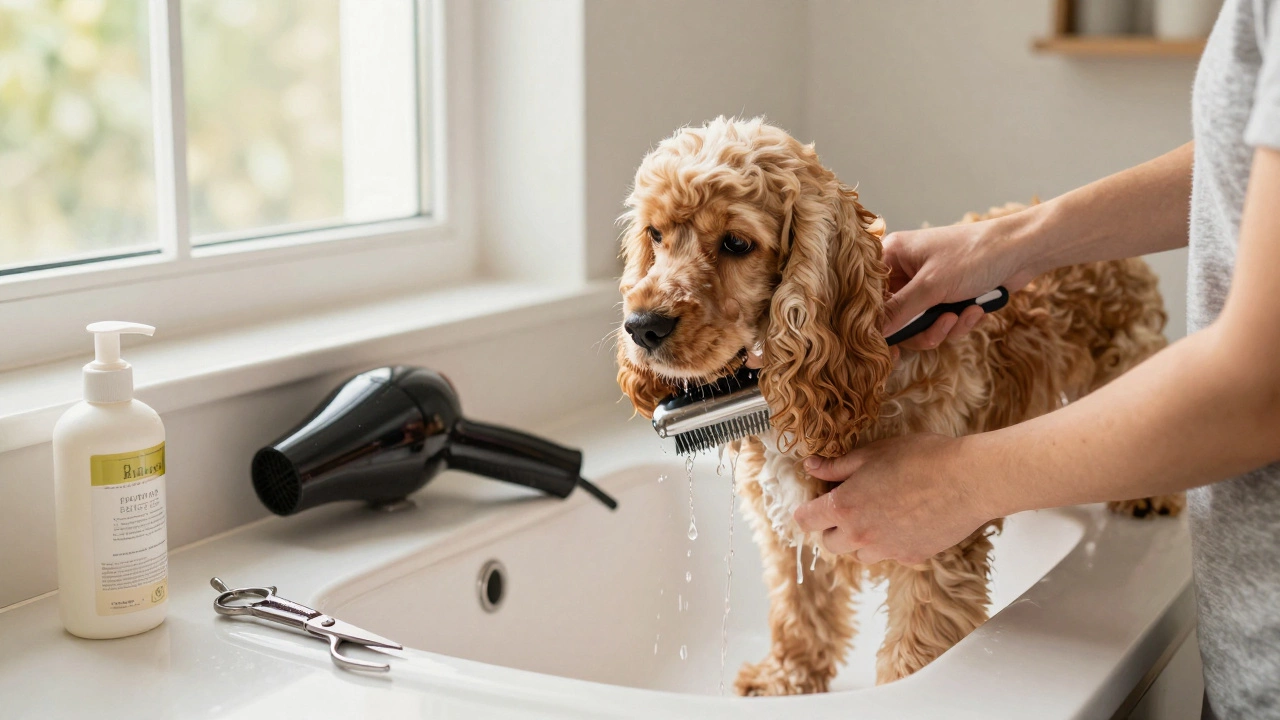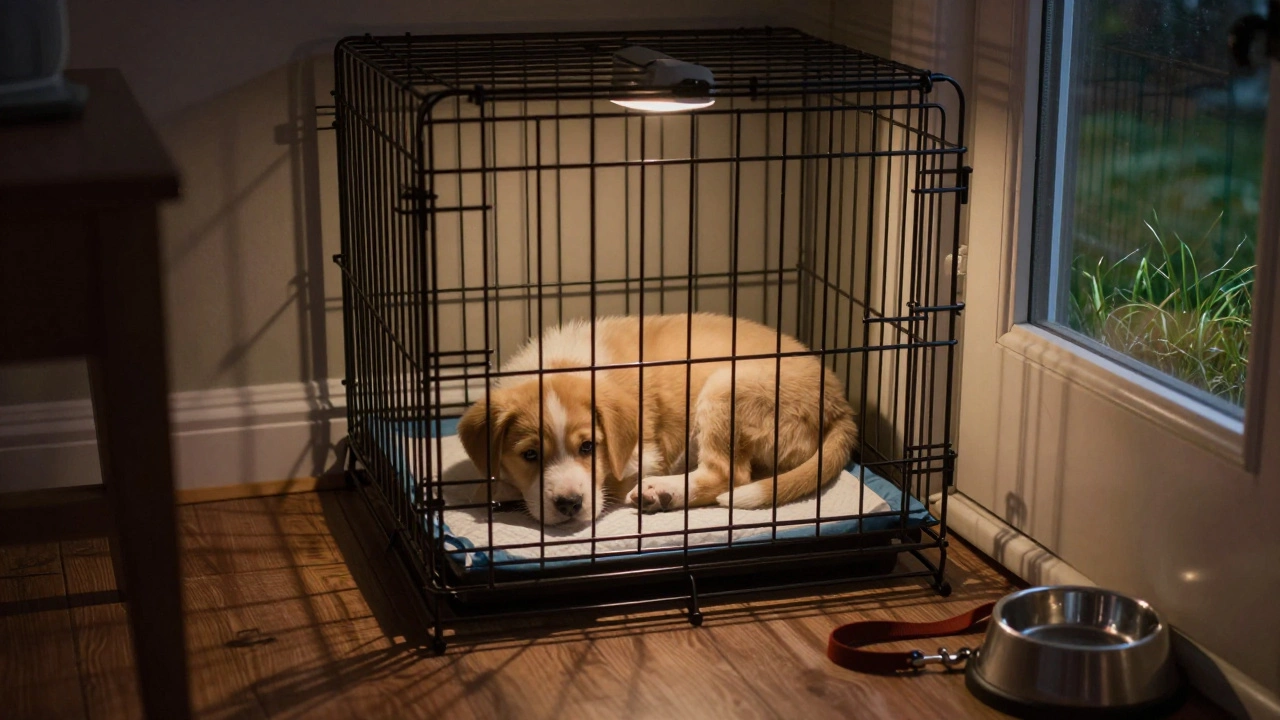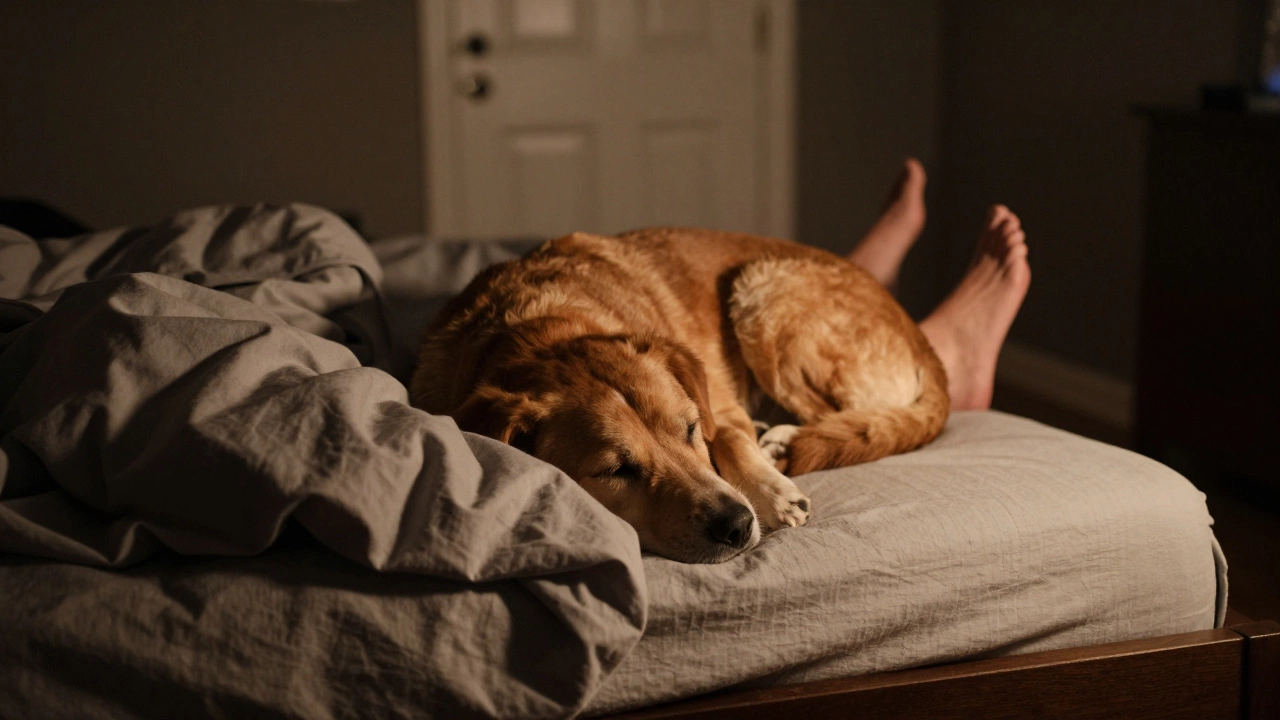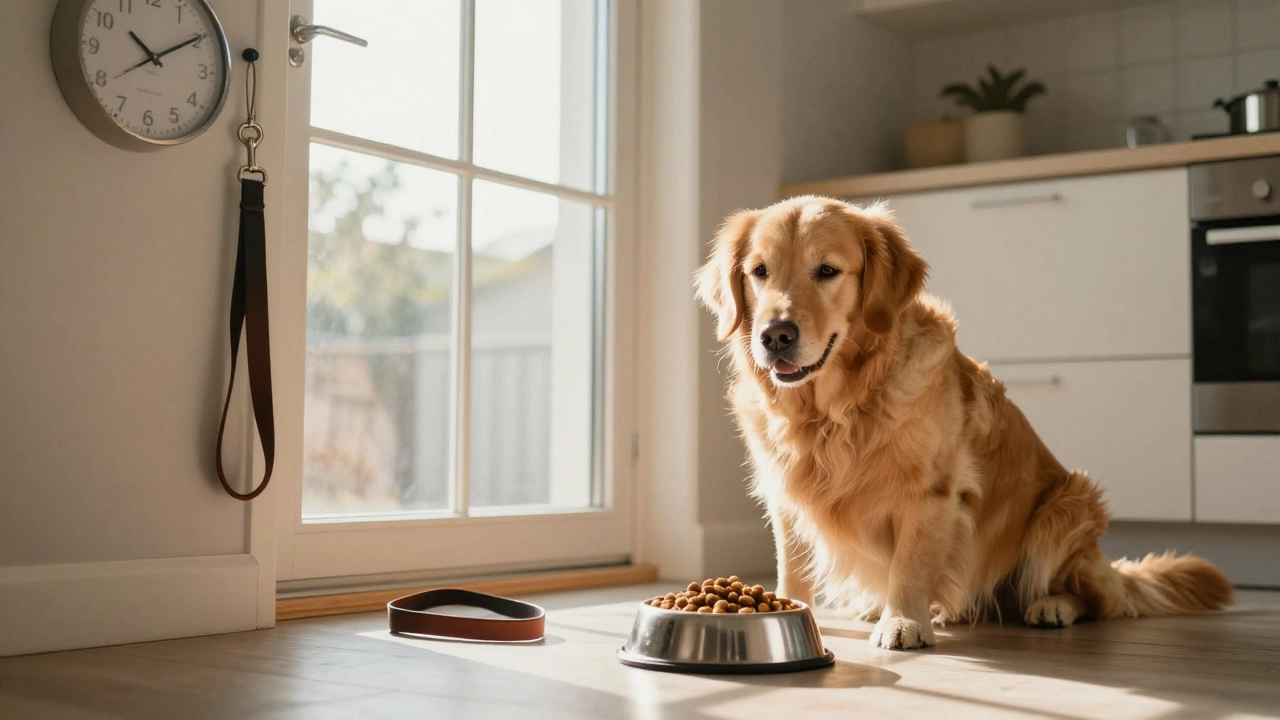Welcoming an 8-week-old puppy into your home is a joyous occasion. These early weeks are crucial for establishing routines and building assurance. Leaving a puppy alone at this tender age requires special consideration.
Puppies crave company and reassurance more than anything else, and it's important to strike a balance between giving them alone time and ensuring they feel safe. With the right approach, adequate toys, and careful planning, you can help them adjust smoothly to their new home.
- Understanding Your Puppy's Needs
- How Long is Too Long?
- Essential Toys for Alone Time
- Creating a Safe Environment
- Gradual Training Techniques
Understanding Your Puppy's Needs
At just 8 weeks old, a puppy is stepping into a whole new world, filled with sights, sounds, and smells they've never experienced before. This is a vital time for their growth, both physically and emotionally. Puppies at this age need a lot of care and attention, as they are still developing their senses and learning to navigate their surroundings. They rely heavily on companionship, as being alone can be quite distressing. Ensuring they feel secure and providing them with a nurturing environment can help them grow into well-adjusted dogs. Understanding your puppy’s needs isn’t just about feeding them and keeping them clean, it’s about ensuring they feel safe and loved, which is just as important for their wellbeing. Puppies at this stage of life need regular feeding, typically four times a day, as they have small stomachs and high energy needs. Their diet should be balanced and rich in nutrients to support healthy growth, and providing them with access to fresh water at all times is a must. Potty training is also a significant aspect of their development, requiring patience and consistency. Puppies have small bladders and will need to be taken outside frequently to establish good habits.
Socialization is another critical factor. Introducing them to a variety of people, environments, and other animals in a positive and controlled manner can prevent anxiety issues and foster a more balanced temperament. Many experts suggest ensuring your puppy meets a range of different ages, genders, and even other friendly pets during this phase. A variety of experiences will help your puppy adapt quicker to change as they mature. This period is also an excellent time to start basic training commands. Puppies learn best in short, consistent sessions, and positive reinforcement will encourage them to understand right from wrong. Knowing their commands can help in managing their behavior, especially when it comes to overexcitement or curiosity. Dogs that are well-socialized during this early stage tend to exhibit fewer behavioral problems as adults.
"A well-socialized puppy grows into a confident and balanced adult dog," says Dr. Sarah Wooten, a veterinarian and animal behaviorist. "Early socialization is key to a puppy's developmental success."
Investing in puppy-appropriate toys can also be incredibly beneficial during this time. Soft, chewable, and interactive toys can help in alleviating the discomfort of teething and provide an engaging distraction when they are alone. These toys not only satisfy their need to chew but also stimulate their developing minds. Safe toys can play a significant role in easing separation anxiety, helping them feel more secure in the times when they must be on their own. Remember, the key to understanding your puppy's needs lies in observation and patience. Every puppy is unique, so being attentive to their behaviors and moods will guide you on how best to cater to their specific needs.
How Long is Too Long?
It's a common question among new pet parents how long you should leave an 8-week-old puppy alone. At this age, puppies are just beginning to explore the world around them and need plenty of companionship. They're still getting used to being on their own after leaving the comfort of their mothers and litter mates. Leaving a young pup alone for too long can lead to anxiety and destructive behavior, not to mention the potential for potty training setbacks. The general rule of thumb is that puppies can hold their bladders for about one hour per month of age, meaning an 8-week-old might be able to go for about two hours.
As they develop their understanding and confidence, these little creatures need frequent human interaction and supervision. As per pet behaviorists, it's not ideal to leave them alone for more than 2 to 3 hours at this stage. They thrive on routine, and having long periods without human presence could disrupt their learning and adaptation processes. Dr. Emily Weiss from the ASPCA notes, "It's crucial to build a puppy's independence gradually, allowing them to feel secure when left alone." This insight reminds pet owners the importance of taking it slow when introducing alone time.
Puppy care involves understanding that puppies have little concept of time and don't recognize the difference between one hour and four, but they will feel the effects of loneliness and maybe abandonment. Cats, by comparison, are more independent and adept at being isolated for longer stretches. With puppies, though, it's crucial to create a balance between their need for company and your daily obligations. Keep a close eye on your pup's behavior and adjust the time alone as they grow and develop trust in their environment.
Signs Your Puppy Has Been Left Alone Too Long
Monitoring your puppy's behavior is key to understanding their comfort with alone time. Anxiety may manifest as excessive barking, whining, or chewing. These behaviors indicate they are stressed and overloaded from the separation, and may need a transition plan to slowly adjust them to being alone. Ensuring your puppy has plenty of stimulation when you're gone can help, such as leaving out engaging puppy toys or a well-stuffed Kong to chew on. An enriching environment can ease their anxiety and keep them content until you return.
If your puppy shows any signs of extreme distress or refuses to touch their toys or food while you are gone, consider shortening the time away and working with a professional trainer if needed. Puppies are highly sensitive, particularly at this age, and their demeanor will often reflect their level of contentment with how long they're left to their own devices.
Setting a Routine
In order to ease the strength of emotional strain that might come from separation, it's vital to establish a set routine. Knowing what to expect throughout the day offers security and can be particularly comforting for 8-week-old puppies. Consistency helps your puppy understand what will happen next. If you must leave, try to do so at the same time each day and ensure you come back around the same time too. With some patience and loving persistence, you'll find the right balance for your little companion. By acknowledging these tips and monitoring their responses, you're providing the best start for a long-lasting, healthy relationship.
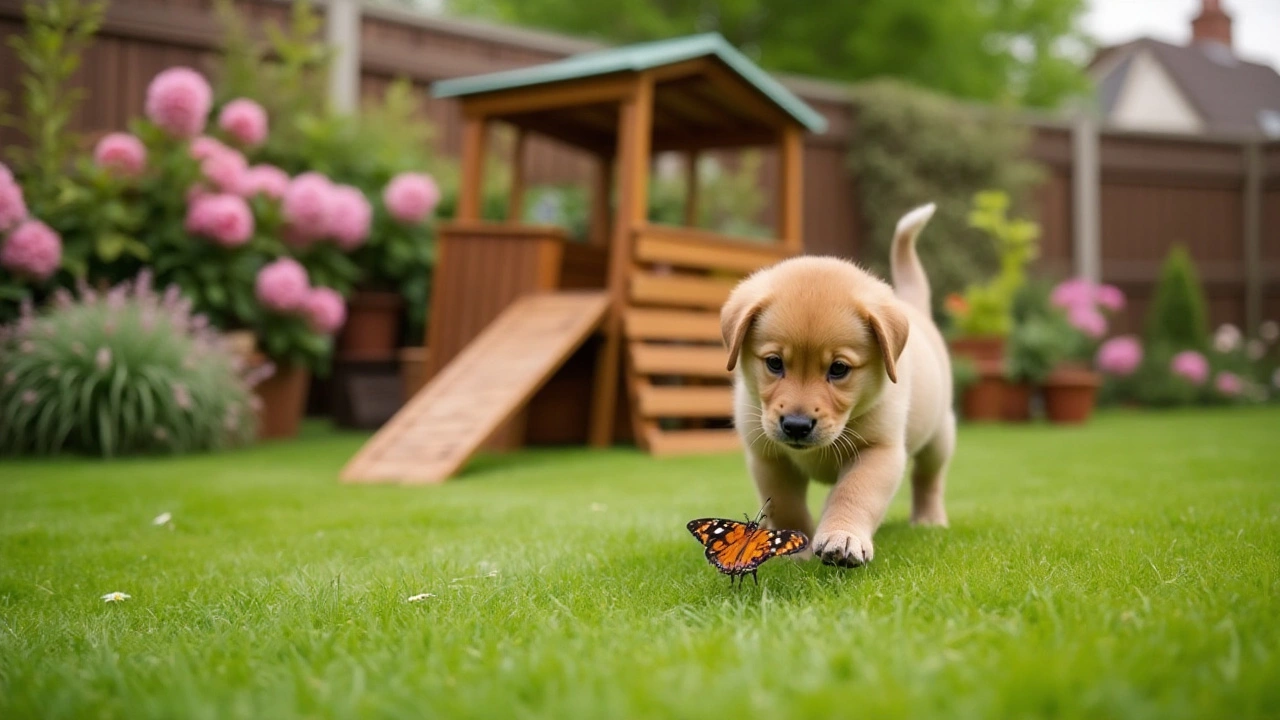
Essential Toys for Alone Time
Puppies are little bundles of energy and curiosity, and when it's time for them to spend some moments alone, the right toys become an ally to keep them engaged and happy. An 8-week-old puppy is at a developmental stage where mental stimulation is just as crucial as physical play. The right toy can make a world of difference, comforting and entertaining them, helping them adapt to short periods of solitude without stress.
One of the most popular types of toys that work wonders for keeping young puppies occupied are puzzle toys. These toys are designed to challenge your puppy's mind by hiding treats that they must work to reach. This not only involves their sense of smell but also encourages problem-solving skills. Many vets recommend such interactive toys, saying they help develop intelligence in the early stages of growth, which can be beneficial in training later on. When your puppy figures out how to get the treat, it provides a rewarding experience that boosts their confidence.
Chew toys are another essential item in the puppy care toolkit. At just 8 weeks old, your puppy is likely starting to experience teething. During this period, they have a natural urge to chew on things, and toys specifically designed for this can save your furniture and keep their little mouths stimulated. Look for toys made from non-toxic materials, ensuring they are safe if your puppy happens to bite off a small piece. High-quality chew toys provide a satisfying outlet for gnawing and can help soothe the discomfort of those growing teeth.
Some days, your puppy might need a friend rather than a challenge. Soft cuddle toys can provide the companionship and comfort they crave, especially in your absence. These toys often retain the owner's scent, making them more reassuring. Selecting toys that mimic a heartbeat can be particularly calming, mimicking the presence of the puppy's littermates. They're more than just plush delights; they offer emotional support during those first, often lonely weeks.
An ambitious 30% of puppy owners report having successfully used electronic toys in which the toys move or make noises when touched. These are excellent for engaging a puppy's instinctual hunting and tracking behaviors. According to childhood development experts, such toys can enhance a puppy’s alertness and response times, replicating interaction and play even when you are not available. The key, however, is to monitor your 8-week-old puppies with these toys initially to ensure they do not become intimidated.
Lastly, do not overlook the importance of classic fetch toys like rubber balls or frisbees. While your puppy may not yet be fetching like a pro, simply chasing and interacting with these toys provides enough physical stimulation to tire them out. Remember, a tired puppy is a content puppy, less likely to become anxious when left alone.
Creating a Safe Environment
Building a safe haven for your 8-week-old puppy is a key step in making sure their time alone is both secure and comforting. It all starts with understanding your puppy's natural curiosity and their tendency to explore. Puppies at this age can be likened to tiny explorers, eager to get their paws into everything. This can include chewing on electric cords or climbing onto wobbly surfaces. To counter these impulses, it's wise to puppy-proof just like you would baby-proof a home.
A good starting point is to designate a specific area where your puppy can feel at ease. This space should be free from potential hazards and filled with things that are both safe and stimulating. Use barriers or gates to restrict access to other parts of the house, keeping your furry friend away from stairs, chemicals, or breakable items. Make sure this environment is enriched with durable puppy toys, allowing them to chew or play safely when they're alone. Consider including a variety of toys, ones that satisfy different play needs such as teething, tugging, or fetching.
Comfort is also a significant part of this equation. Puppies appreciate a warm, cozy bed to snuggle into. The bedding should be plush but robust enough to resist chewing or scratching. In some cases, a crate can serve as a safe retreat. The crate, lined with soft materials, can become a den-like sanctuary where puppies feel particularly secure. The choice between a crate and a playpen depends significantly on your puppy’s preferences and behavior.
“Creating a nurturing environment that caters to a puppy's sense of security can contribute greatly to their overall well-being and development,” notes Dr. Susan G., a renowned veterinarian and animal behaviorist.
Moreover, it's crucial to pay attention to the temperature of the space. Puppies are quite sensitive to extreme temperatures, so ensure they are kept away from open windows during cold days or direct sunlight in the warmer months. A comfortable ambiance can be achieved with moderate heating or cooling, but avoid devices with exposed cords, which can be enticingly chewable.
If you're the tech-savvy type, you might find it beneficial to install a pet camera in the space. This allows you to monitor your puppy’s activities remotely and reassure yourself of their safety. Some advanced cameras even come with treat dispensers or microphones so you can engage with your pet. While technology cannot replace human interaction, it can provide peace of mind while you're away.
Lastly, routine is a cornerstone of making your puppy feel at ease. Established feeding, play, and rest times help puppies understand what to expect, reducing anxiety. As part of this, look at introducing sound or music in the environment, keeping them company without disturbing their rest. The hum of the radio or a gentle lullaby can make their alone time less intimidating.
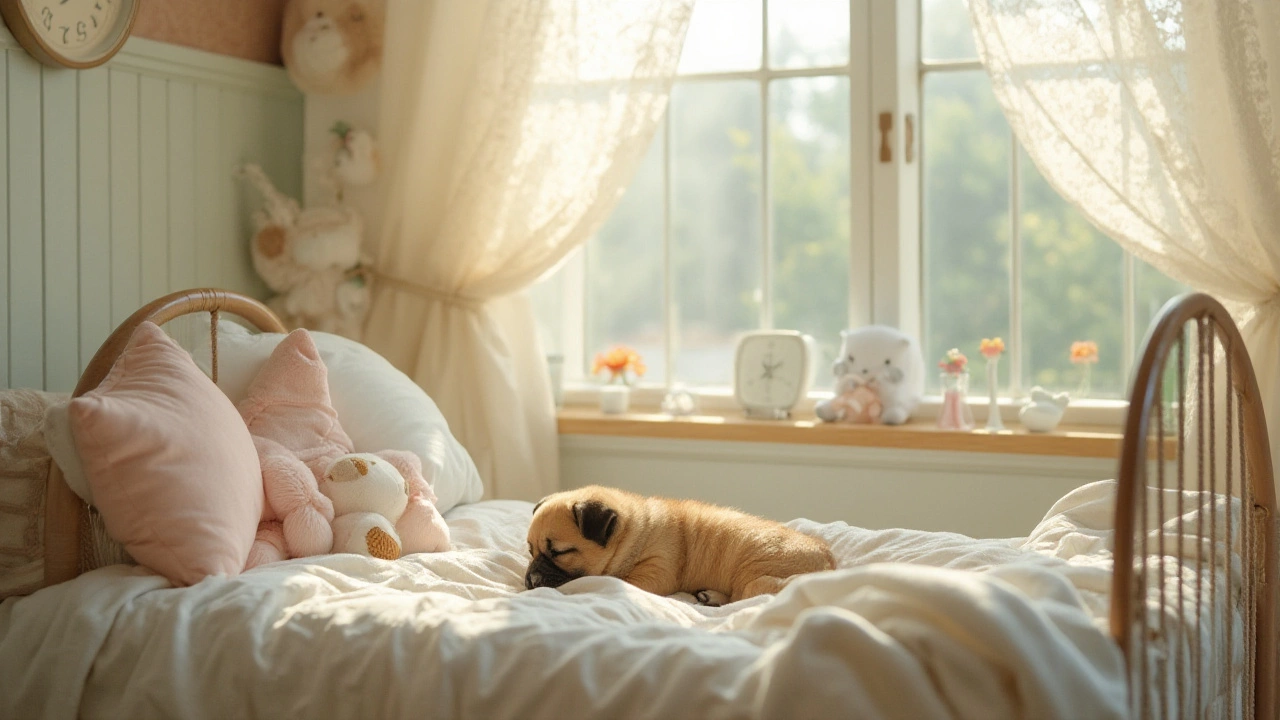
Gradual Training Techniques
Training an 8-week-old puppy to be comfortable in their own company is a gradual process that benefits from patience and consistency. At this age, puppies are just beginning to understand the world around them. They rely heavily on companionship for emotional support, making the concept of alone time somewhat challenging initially. It is important to introduce this concept gently, allowing the puppy to adjust without overwhelming them. Start by leaving the room for just a minute or two while still within their line of vision. Gradually increase the duration as they become accustomed to your temporary absence. Positive reinforcement is a secret weapon in this adventure. Reward them with affection and treats when they remain calm during these short separations. Such measures help develop their confidence and trust in their environment.
Building up a routine is beneficial too. Much like us, puppies thrive on routine which provides them a sense of security. Set a schedule that includes feeding, playtime, and brief periods of separation sprinkled throughout. As they become familiar with the sequence of events, they find comfort in the predictability. Consistent nap times can also work wonders, as young puppies often enjoy a good nap between bursts of energy. Introducing a cozy bed or crate can facilitate comforting alone times during these naps. Crate training deserves a mention as it offers a suitable way to get them used to being left alone in a safe environment. The crate, however, should always be associated with positivity, never punishment.
"Puppies need boundaries and safety to thrive," says renowned dog trainer Victoria Stilwell. "Starting small and working up to longer periods alone helps build a puppy's independence while keeping their needs in focus."
Much like other early training phases, using playpens and gates allows for a designated safe space where the puppy can be left briefly. This area should be filled with familiar smells and toys to keep them engaged. Letting them hear your voice while you're away through pre-recordings can also make the transition smoother, reducing anxiety. A few minutes of screen time with sounds of you talking can serve this purpose. Advanced techniques could involve setting up a camera to check in on their comfort levels and how long they are content to remain alone. Celebrate their successful alone time with a rewarding play session and belly rubs. This not only rewards them for their progress but also strengthens your bond.

